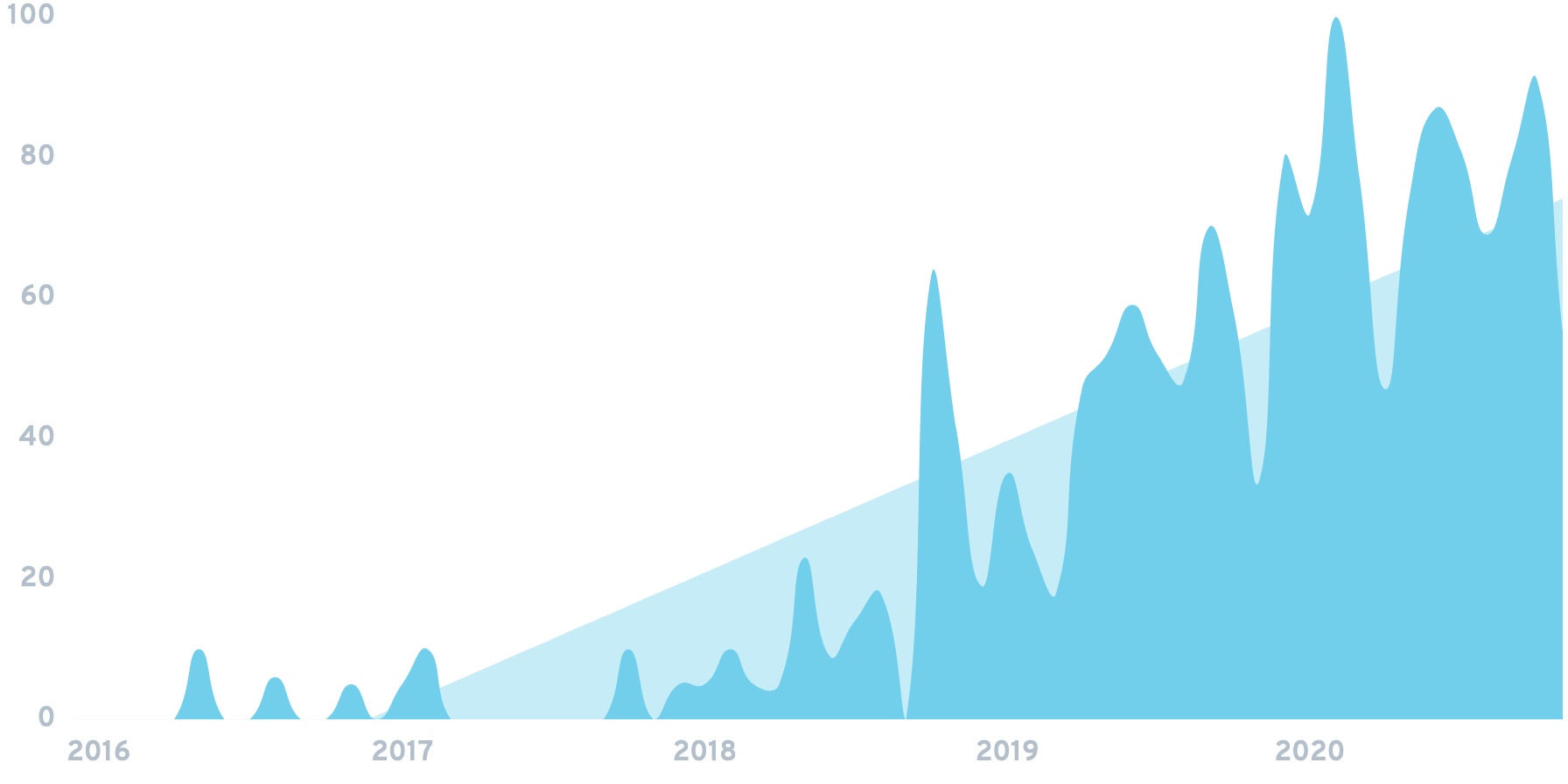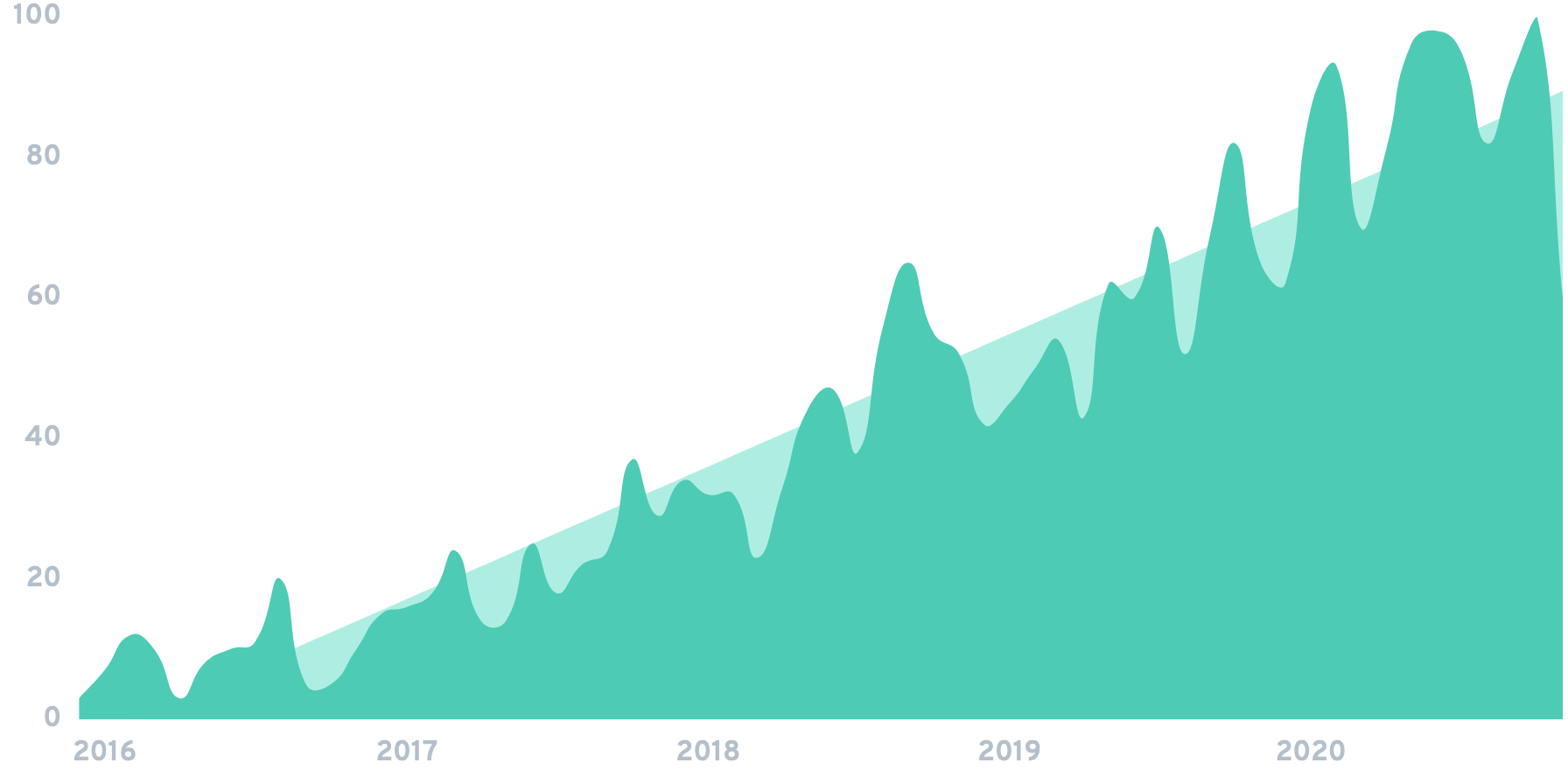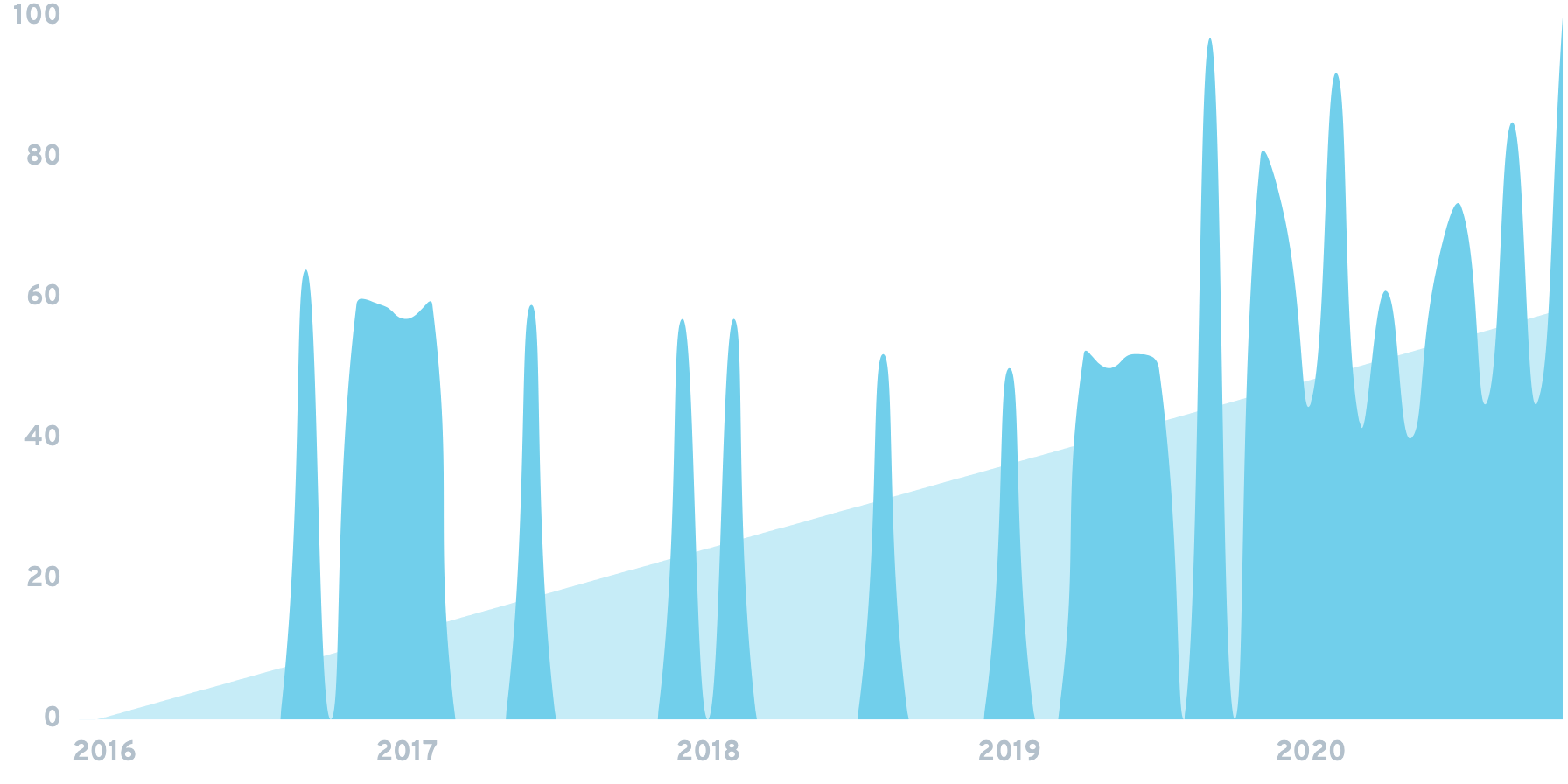Micro frontends, customer data platforms, and 2 more hot trends

Exploding Topics scours the internet to find emerging trends before they take off.
Here are four of the latest developments, along with some insights and analysis to help you take advantage.
1. Micro Frontend

A micro frontend is frontend app development broken up into independent chunks.
For example, an ecommerce website can be split into development silos for landing page, search, product pages, and checkout. Each part can then be updated, tested and improved with independent tech stacks.
Micro frontends can help to efficiently scale up feature rollouts. As a result, searches for “micro frontend” have shot up 9x in the last 24 months. And numerous companies have jumped on this new practice including Fiverr, HelloFresh, Spotify and Skyscanner.
In a recent survey, 80% of web developers believe that this new approach will still be around in 3 years. Which is a significant period of time in the software space.
What’s next:
Micro frontend software architecture is part of the “Micro Everything” software trend.
This meta trend has already seen entire application backends broken up in favor of microservices powered by serverless technology. For example, Netflix serves 250 million hours of video content daily powered by 700+ loosely connected microservices.
Get new trending topics in your inbox:
2. Customer Data Platform

A customer data platform is software that combines customer data from a variety of sources in one place.
According to Chief Martech, data analytics is one of the fastest-growing martech categories. And the Customer Data Platform market is expected to grow from $2.4B today to $10.3B by 2025 (CAGR of 34%).
Emerging players in this space include CaliberMind, Segment and Optimove.
What’s next:
Customer Data Platforms are one of many SaaS products attempting to unify customer data. A recent survey from Oxford Research found that 29% of business executives state that they struggle to “derive insights from captured information”. And 70% state that they want to get insights from customer data using analytics. Other examples of this trend include creative management platforms, audience intelligence, and attribution software.
3. Reusable Qtip

Reusable Qtips are reusable cotton swabs for cleaning one’s ears.
Searches for this product have grown by 2600% over the last 5 years.
LastSwab is the current leader in this emerging category. The company ran a Kickstarter campaign with a $14k goal. They raised $772k. And the company recently launched a number of reusable products, including a line of reusable tissues and makeup pads.
What’s next:
Reusable Qtips are part of the “Reusable Product” meta trend. 87% of US-based consumers state that they aim to reduce their daily plastic use. Other examples of this trend include Stasher bags, silicone straws, reusable kitchen towels, and bamboo cutlery.
4. Goli Gummies

Goli Gummies are a brand of gummies that contain apple cider vinegar.
The challenge for many AVC brands has been taste.
While many ACV products have attempted to mask the taste with flavored drinks, AVG gummy brands are taking a different approach. They’re infusing gummies with ACV. And, based on the spiking demand for ACV gummies, they seem to be succeeding.
Other growing brands in the ACV gummy space include Webber Naturals, Gummiology and Suku Vitamins.
What’s next:
Goli gummies are part of the Gummification meta trend. CBD gummies started the trend. And we’re seeing more and more compounds delivered in gummy form. Other examples of this trend include hair gummies, sleep gummies, and elderberry gummies.
 I built an SEO tool that gives you the actual fix, not just the problem. Looking for brutal feedback.
I built an SEO tool that gives you the actual fix, not just the problem. Looking for brutal feedback.
 Would you use an AI co‑pilot that turns your startup idea into an execution roadmap?
Would you use an AI co‑pilot that turns your startup idea into an execution roadmap?

hi Josh, what are you using to gather these? Google Trends? Are you looking at global trends, or for specific locations?
Also a small nitpick:
While serverless technology definitly helps companies build microservices, I think the majority of microservices built today still use the more traditional continuously running containers or even VPS's.
Still, this stuff is interesting, thanks for sharing.
Hey Frederik, it's global trend data. The charts themselves are based on google trends search interest for those topics.
In terms of identifying new trends, we have algorithms constantly monitoring a whole range of sources across the web. Across search, social, shopping channels etc. And interesting new things with potential are flagged.
And good point, a lot of microservices are still powered by good ol' VPSs.
Hi Josh,
I read this already in your newsletter, thanks. I just cross checked these with Google Trends and it reflects a different picture. Can you share on what basis you are coming up with these charts.
Hey Rajan, no worries. Yeah, you have to make sure you're looking at global data and the same timeframe.